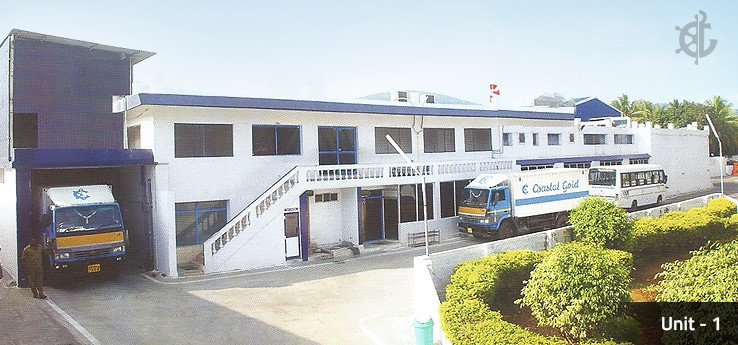Coastal Corporation Ltd (NSE: COASTCORP, BSE: 501831), trading at ₹36.6 as of April 11, 2025, represents one of India’s longstanding players in the seafood export industry. Incorporated in 1981, the company has maintained its niche by focusing on aquaculture shrimp processing and export. With certifications like HACCP, BRC, and BAP under its belt, Coastal Corporation Ltd (CCL) ensures its compliance with international food safety and quality standards. Despite operating in a globally competitive industry, the company has sustained consistent operations, although it faces several financial and operational challenges.
This article provides a detailed analysis of the company’s business model, financial performance, peer comparison, strengths, weaknesses, and future outlook.
1. Business Overview
Coastal Corporation Ltd specializes in the sourcing, processing, and packaging of shrimp for global markets. It supplies both sea-caught and aquaculture varieties in different forms—raw or cooked, frozen blocks, or Individually Quick Frozen (IQF) packs. The product range includes head-on, headless, peeled, deveined, and breaded shrimp.
The company caters mainly to the U.S., Europe, and Southeast Asia, where demand for frozen seafood continues to rise. Its production process incorporates state-of-the-art freezing, packing, and quality testing facilities, and the management keeps a close focus on compliance and traceability.
2. Stock Performance and Market Valuation
-
Current Price: ₹36.6
-
52-Week High/Low: ₹64.8 / ₹33.6
-
Market Capitalization: ₹245 crore
-
Book Value: ₹39.3
-
Price-to-Book Ratio: 0.93
-
Dividend Yield: 0.66%
-
Face Value: ₹2
-
Promoter Holding: 42.22% (as of Dec 2024)
The stock currently trades below its book value, signaling undervaluation by the market. However, this also reflects investor concern regarding profitability and operational challenges.
3. Financial Performance Overview
Revenue Trends (Standalone)
-
FY2022: ₹491 crore
-
FY2023: ₹353 crore
-
FY2024: ₹436 crore
-
TTM (Trailing Twelve Months): ₹588 crore
Although revenue bounced back in FY24 and the trailing twelve months, long-term compounded sales growth over the last five years stands at -6%. A closer look reveals fluctuations driven by input cost volatility, global shrimp prices, and operational inefficiencies.
Profitability Trends
-
FY2022 Net Profit: ₹14 crore
-
FY2023 Net Profit: ₹7 crore
-
FY2024 Net Profit: ₹5 crore
-
TTM: Loss of ₹1 crore
Compounded Profit Growth
-
10 Years: -8%
-
5 Years: -35%
-
3 Years: -37%
-
TTM: -146%
Low net profit margins and declining returns have impacted investor confidence. Coastal Corporation struggles with thin operating margins, high debt servicing costs, and fluctuations in other income.
Operating Margins
-
OPM FY2022: 3%
-
OPM FY2023: 6%
-
OPM FY2024: 6%
-
OPM TTM: 4%
Margins remain volatile, reflecting cost pressures and seasonal shifts in export demand.
4. Quarterly Performance
| Quarter | Revenue (₹ Cr) | Net Profit (₹ Cr) | OPM (%) | EPS (₹) |
|---|---|---|---|---|
| Dec 2023 | 107.00 | 2.94 | 8.74% | 0.44 |
| Mar 2024 | 116.62 | -6.19 | -1.19% | -0.92 |
| Jun 2024 | 132.81 | 3.05 | 7.17% | 0.46 |
| Sep 2024 | 154.77 | 0.51 | 4.87% | 0.08 |
| Dec 2024 | 183.55 | 1.95 | 4.90% | 0.29 |
Despite rising revenue, Coastal Corporation fails to convert it into robust profits. Negative earnings in Q4 FY24 highlight the vulnerability of margins to seasonal and currency-related disruptions.
5. Balance Sheet Highlights
-
Total Assets (Sep 2024): ₹756 crore
-
Net Worth: ₹263 crore
-
Total Borrowings: ₹451 crore
-
Debt-to-Equity Ratio: ~1.71
-
Reserves: ₹250 crore
-
Fixed Assets + CWIP: ₹295 crore
The balance sheet has grown significantly, driven mainly by debt-funded capital expenditures. A large portion of capital remains tied in capital work-in-progress (CWIP), which increases interest burden without immediate revenue impact.
6. Cash Flow Analysis
-
Cash from Operating Activities (FY2024): ₹-63 crore
-
Cash from Investing Activities: ₹-81 crore
-
Cash from Financing Activities: ₹152 crore
-
Net Cash Flow: ₹9 crore
Negative operational cash flow raises concerns about working capital management. The company relies heavily on debt to fund operations and investments, increasing long-term financial risk.
7. Working Capital and Efficiency Metrics
-
Debtor Days: 49 (up from 27 in FY23)
-
Inventory Days: 221 (up from 192)
-
Cash Conversion Cycle: 261 days (up from 210)
The efficiency of cash management has deteriorated. A high cash conversion cycle implies blocked capital in receivables and inventory, leading to liquidity constraints.
8. Return Ratios
-
Return on Capital Employed (ROCE): 4.59%
-
Return on Equity (ROE): 1.79%
-
3-Year Average ROE: 3.68%
These ratios remain below industry averages, indicating underutilization of equity capital and inefficient capital allocation.
9. Dividend Policy
Despite operational pressures, the company maintains a healthy dividend payout ratio of 26.3%. This shows management’s intent to reward shareholders even during slow periods.
10. Peer Comparison
| Company | Price (₹) | Market Cap (₹ Cr) | ROCE (%) | Net Profit (Qtr ₹ Cr) | Sales (Qtr ₹ Cr) | P/E |
|---|---|---|---|---|---|---|
| Apex Frozen | 209.76 | 655.5 | 4.96 | -0.22 | 230.73 | 422.9 |
| Kings Infra | 124.60 | 305.34 | 17.65 | 3.92 | 46.56 | 24.89 |
| Sharat Ind. | 72.77 | 273.35 | 9.99 | 2.64 | 58.75 | 27.92 |
| Coastal Corp | 36.59 | 245.07 | 4.59 | 1.95 | 183.55 | – |
| Waterbase | 47.95 | 198.64 | -4.86 | -3.91 | 66.79 | – |
| Zeal Aqua | 12.02 | 151.53 | 11.20 | 6.27 | 24.17 | 10.58 |
Coastal Corporation trails behind peers in profitability and capital efficiency, although it remains competitive in sales scale. The absence of a clear earnings multiple (P/E) suggests inconsistent or negative trailing earnings.
11. Shareholding Pattern
| Quarter | Promoter Holding | FIIs | Public |
|---|---|---|---|
| Mar 2022 | 41.09% | 1.73% | 57.18% |
| Dec 2024 | 42.22% | 0.94% | 56.85% |
Promoters have gradually increased their stake, signaling confidence in long-term growth. However, foreign institutional investors have reduced exposure, likely due to financial underperformance.
12. Strengths
-
Trades below book value, offering a margin of safety
-
Exports contribute to strong foreign exchange earnings
-
Certified facilities increase acceptance in regulated markets
-
Maintains consistent dividend payout despite volatility
-
Revenue growth in the last two quarters shows potential rebound
13. Weaknesses
-
Sales and profit have contracted over the last five years
-
High debt levels and rising interest costs pressure profits
-
Cash flow from operations has turned negative
-
Debtor and inventory cycles have lengthened
-
Poor return ratios compared to peers
-
Dependence on “Other Income” for profitability boosts
14. Outlook and Strategy
For Coastal Corporation to unlock shareholder value, it must prioritize the following:
-
Debt Reduction: Lowering financial leverage will improve net margins and reduce interest burden.
-
Working Capital Optimization: Shortening the cash conversion cycle will free up capital and improve liquidity.
-
Product Diversification: Introducing high-margin seafood products or ready-to-cook meals can enhance margins.
-
Technology Upgrades: Automation and traceability tech can improve quality, reduce costs, and attract premium clients.
-
Global Market Expansion: Entering new markets like South Korea or the Middle East can mitigate overdependence on traditional export destinations.
Conclusion
Coastal Corporation Ltd stands at a critical juncture. The company holds long-standing experience, certifications, and market reach in a high-potential sector. However, financial stress, low profitability, and inefficiencies dilute its investment appeal. Recent improvements in revenue and promoter confidence offer some optimism, but fundamental corrections in debt, margin expansion, and operational efficiency must follow.
Investors should monitor upcoming quarterly results and management commentary on capital allocation and working capital strategy. A focused turnaround can elevate Coastal Corporation into a sustainable long-term player in India’s seafood export industry. Until then, it remains a cautious play—more suitable for risk-tolerant, value-focused investors.




